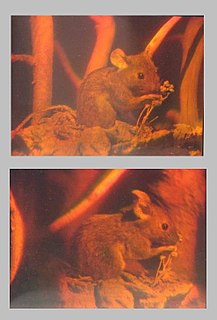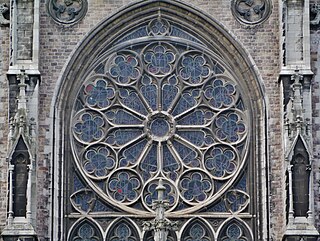Ray King | |
|---|---|
| Born | July 4, 1950 |
| Known for | Sculpture |
Ray King (born July 4, 1950) is an artist who is best known for his light responsive sculptures.
King was born in Philadelphia, Pennsylvania, on July 4, 1950. In his early twenties, he apprenticed with a stained glass artist. In 1975, he received a Louis C. Tiffany Fellowship to travel to England and study with master stained glass artist, Patrick Reyntiens at the Burleighfield House Trust in Buckinghamshire.
When King returned, he became involved with the craft art movement of the mid-1970s. His work has been exhibited internationally since 1976, in the United States, Europe and Asia. Major permanent installations of his work have been commissioned throughout the United States and abroad. All are site-specific and inspired by the surrounding space and landscape to create a unique sense of place and identity. [1]
The scale and scope of his art evolved dramatically over the years as King moved into the three-dimensional / public art realm. His repertoire of materials expanded to include holographic and laser-etched, light-responsive laminate films, and he mastered the use of advanced 3-D computer technology facilitating the elaborate engineering of his sculptures. His unique tectonic, site-specific works are in demand by universities, municipal art commissions and corporations around the world. [2]
King's art draws upon principles of sacred geometry to render three-dimensional shapes and patterns found in nature. Through the application of advanced design technology, and the manipulation of light and color, King creates light-responsive sculptures that interact with viewers and animate the surrounding environment. [3] [4]
His sculptures – inspired by geometric patterns found in nature—dynamically interact with the sun and artificial light, projecting and reflecting light into the surrounding environment, shifting in color and transparency and changing appearance with the times of day and degrees of sunlight.
King is interested in and inspired by ancient cultures’ use of light in architecture and monuments, particularly how light and mathematics were used to further understand planetary movement and the Earth’s relation to the larger universe. King brings a futuristic aesthetic to these timeless pursuits, creating high-tech, tensile structures designed and engineered using state-of-the-art 3-D modeling software, all to interact with the Sun much in the same way artists and astronomers have for thousands of years.
The primary material used in King’s work is glass which, both durable and transparent, can be laminated with refractive and reflective materials to dynamically interact with light; these include holographic films and dichroic coatings designed to bend or split light wavelengths into colors. He has vast experience creating tectonic, tensile structures made of stainless steel, tension cable, and specialty hardware. [2]

Holography is a technique that enables a wavefront to be recorded and later re-constructed. Holography is best known as a method of generating three-dimensional images, but it also has a wide range of other applications. In principle, it is possible to make a hologram for any type of wave.

Stained glass is coloured glass as a material or works created from it. Throughout its thousand-year history, the term has been applied almost exclusively to the windows of churches and other significant religious buildings. Although traditionally made in flat panels and used as windows, the creations of modern stained glass artists also include three-dimensional structures and sculpture. Modern vernacular usage has often extended the term "stained glass" to include domestic lead light and objets d'art created from foil glasswork exemplified in the famous lamps of Louis Comfort Tiffany.

Op art, short for optical art, is a style of visual art that uses optical illusions.

Victor Vasarely was a Hungarian-French artist, who is widely accepted as a "grandfather" and leader of the Op art movement.

Lamination is the technique/process of manufacturing a material in multiple layers, so that the composite material achieves improved strength, stability, sound insulation, appearance, or other properties from the use of the differing materials, such as plastic. A laminate is a permanently assembled object created using heat, pressure, welding, or adhesives. Various coating machines, machine presses and calendering equipment are used.

Kinetic art is art from any medium that contains movement perceivable by the viewer or that depends on motion for its effect. Canvas paintings that extend the viewer's perspective of the artwork and incorporate multidimensional movement are the earliest examples of kinetic art. More pertinently speaking, kinetic art is a term that today most often refers to three-dimensional sculptures and figures such as mobiles that move naturally or are machine operated. The moving parts are generally powered by wind, a motor or the observer. Kinetic art encompasses a wide variety of overlapping techniques and styles.

Sir William Blake Richmond KCB,, PPRBSA was a British painter, sculptor and a designer of stained glass and mosaic. He is best known for his portrait work and decorative mosaics in St Paul's Cathedral in London.
Visual design elements and principles describe fundamental ideas about the practice of visual design.
Elements of art are stylistic features that are included within an art piece to help the artist communicate. The seven most common elements include line, shape, texture, form, space, color and value, with the additions of mark making, and materiality. When analyzing these intentionally utilized elements, the viewer is guided towards a deeper understanding of the work.

Stanislav Libenský and Jaroslava Brychtová were contemporary artists. Their works are included in many major modern art collections, such as the Metropolitan Museum of Art and the Victoria & Albert Museum.
A holographic display is a type of 3D display that utilizes light diffraction to display a three-dimensional image to the viewer. Holographic displays are distinguished from other forms of 3D displays in that they do not require the viewer to wear any special glasses or use external equipment to be able to see the image, and do not cause the vergence-accommodation conflict.
A fabric structure is a structure made of fabric, with or without a structural frame. The technology provides end users a variety of aesthetic free-form building designs. Custom-made structures are engineered and fabricated to meet worldwide structural, flame retardant, weather-resistant, and natural force requirements. Fabric structures are considered a sub-category of tensile structure.

Cinimod Studio is a London-based experiential agency involved in various architecture and lighting design projects. Projects undertaken typically involve a wide mix of media and technologies, and often involve interactive design.
Willet Hauser Architectural Glass, Inc is a North American stained glass firm located in Winona, Minnesota that specializes in the design, fabrication, preservation and restoration of leaded stained glass and faceted glass windows.

Fireworks of Glass Tower and Ceiling, also known as Fireworks of Glass, is a blown glass sculpture installation in the permanent collection of The Children's Museum of Indianapolis located in Indianapolis, Indiana, United States of America. The tower sits on a glass base, a pergola ceiling, and rises through the center of the museum's spiraling ramp system. Created by Dale Chihuly in 2006, it is his largest permanently installed glass sculpture. Beneath the tower is an accompanying exhibit that describes the sculpture and the process by which it was made. The tower and pergola ceiling are two distinct accessioned objects in the Children's Museum's collection.

The visual arts are art forms such as painting, drawing, printmaking, sculpture, ceramics, photography, video, filmmaking, design, crafts and architecture. Many artistic disciplines such as performing arts, conceptual art, and textile arts also involve aspects of visual arts as well as arts of other types. Also included within the visual arts are the applied arts such as industrial design, graphic design, fashion design, interior design and decorative art.

Robert Kehlmann is an artist and writer. He was an early spokesperson for evaluating glass art in the context of contemporary painting and sculpture. His glasswork has been exhibited worldwide and is the focus of numerous commentaries. Kehlmann's work can be found in museums and private collections in the United States, Europe and Asia. He has written books, articles, and exhibition reviews for publications in the U.S. and abroad. In 2014 the Rakow Research Library of The Corning Museum of Glass acquired Kehlmann's studio and research archives.
Peter Mollica is an American stained glass artist.

The Cathedral (Katedrála) is an abstract painting created by Czech artist František Kupka in 1912–13. The medium is oil on canvas, and the painting’s dimensions are 180 × 150 cm. The painting is a part of the permanent Jan and Meda Mládek collection of Museum Kampa in Prague, Czech Republic. This painting is one of a series of abstract works that Kupka termed Vertical and Diagonal Planes. Vertical lines, running the entire length of the canvas are intersected by diagonal lines to form rectilinear shapes of various sizes. The diagonal lines run from the top left to the bottom right and from the top right to the bottom left of the painting. These rectilinear shapes are composed of blocks of black, white, and a range of blue, red, purple, gray, and brown color. The large black space between the two clusters of the shapes, and the arching of the top of the right cluster, brings to the viewer’s mind two stained glass windows illuminated by light in a dark cathedral.
French Gothic stained glass windows were an important feature of French Gothic architecture, particularly cathedrals and churches built between the 12th century and 16th century. While stained glass had been used in French churches in the Romanesque period, the Gothic windows were much larger, eventually filling entire walls. They were particularly important in the High Gothic cathedrals, most famously in Chartres Cathedral. Their function was to fill the interior with a mystical colored light, representing the Holy Spirit, and also to illustrate the stories of the Bible for the large majority of the congregation who could not read.